

For The Ultimate Expansion Leaders
Wanting More Answers From


TheE-Book
Kelly Kingston
The Naked Truth
How do I F%*kin do it?
Introduction
Welcoming to your transformative journey
Setting the tone for self-discovery and personal growth
Brief overview of the 13 chapters
What we all need to know but don’t want to hear!!
Welcome to The Naked Truth: A Transformative SelfDiscovery Journey for Entrepreneurs who want to elevate their game and live their success.


HOW DO I F%*KIN DO IT?
EMBARK ON "THE NAKED TRUTH: A TRANSFORMATIVE JOURNEY" BY EMBRACING DISCOMFORT, AUTHENTICITY, AND INTENTIONAL SELFREFLECTION THIS GUIDE CHALLENGES CONVENTIONAL THINKING, URGING YOU TO CONFRONT THE UNVARNISHED REALITY OF YOUR EXISTENCE TO EMBARK ON THIS TRANSFORMATIVE JOURNEY, CULTIVATE COURAGE TO FACE UNCOMFORTABLE TRUTHS, BREAK FREE FROM SOCIETAL EXPECTATIONS, AND REDEFINE PERSONAL BOUNDARIES ENGAGE IN MINDFUL SELF-INQUIRY, EXPLORING THE UNSEEN WORLD WITHIN THIS IS NOT A PASSIVE EXPERIENCE BUT AN ACTIVE PARTICIPATION IN YOUR OWN EVOLUTION NAVIGATE CHAPTERS WITH OPENNESS, CHALLENGE ASSUMPTIONS, AND LEVERAGE PRACTICAL STRATEGIES FOR PERSONAL DEVELOPMENT EMBRACE THE DISCOMFORT – IT'S THE CRUCIBLE FOR TRANSFORMATION ON THIS COURAGEOUS EXPEDITION
THIS IS NOT JUST A EBOOK; IT'S A GUIDE TO YOUR MOST AUTHENTIC SELF

DEAR SELF...
We are delighted to welcome you to a journey of selfdiscovery and personal growth. In the pages that follow, we embark together on a transformative exploration designed to empower and inspire you along the path of your own evolution.
This ebook is more than just words on a page; it's a guide, a companion, and a catalyst for change. It invites you to delve into the depths of your being, challenge your perspectives, and embrace the possibilities of personal transformation. Each chapter unfolds a new facet of insight, offering guidance, strategies, and reflections that can illuminate your path toward a more fulfilling and authentic life.
Setting the Tone for Self-Discovery:
In the chapters ahead, you'll find a harmonious blend of wisdom and practicality. This ebook is not a prescription but a conversation a dialogue between the written word and your inner self. As you engage with the content, consider it an invitation to explore, question, and ultimately, discover the boundless potential that resides within you.
Chapter 1: Where to Bloody START!! 07
The fear of doing what it takes to change Explore the transformative power of change and its potential to shape a new narrative for your life.COURAGE
Chapter 2: NOT FEELING ACCEPTED 12
Understand the emotional weight of not feeling accepted, explore the impact on self-esteem and well-being, and discover strategies for cultivating self-acceptance. - EXPLORE
Chapter 3: Loving Me Is Enough 18
Distinguish between solitude and loneliness, embrace the positive aspects of being alone, and nurture healthy connections for times of loneliness. SOLITUDE
Chapter 4: I‘m Fuc*kin Awesome... 23
Differentiate between self-acceptance and external validation, embrace authenticity without fear of judgement, and cultivate a mindset of selfvalidation. - WORTHY
Chapter 5: The World You Can‘t See 29 "Delve into the sources of personal energy, discovering the connection between passion and vitality Uncover strategies to optimise and sustain energy levels, encouraging a balanced and energised life " - KNOWING
Kelly Kingston
Chapter 6: Unveiling Your Energy Source
Identify sources of personal energy, explore the connection between passion and energy, and discover strategies for optimising and maintaining energy levels - SOURCE
33
Chapter 7: Stop The C.R.A.P. 39
"Empower yourself by dismantling C R A P - Criticism, Resistance, Anxiety, and Procrastination Differentiate self-respect from self-love, bolster confidence and self-worth Overcome old patterns, building personal development through selfappreciation " - EMBRACE
Chapter 8: Anxiety as an Opportunity
45
"Transform anxiety into an opportunity for growth. Uncover root causes, reframing anxiety for personal development. Implement strategies enhancing mental well-being, navigating challenges and creating a positive mindset amidst anxious moments."- REFRAME
Chapter 9: Facing the Naked Truth
51
"Explore the challenge of self-honesty, embracing responsibility, mistakes, and imperfections. Discover strategies for facing the naked truth about oneself, striving for personal growth through authenticity and self-awareness." - HONOUR
Chapter 10: Move With Grace
"Navigate personal well-being with love, not avoidance. Encourage a positive relationship with health and fitness. Discover strategies to seamlessly integrate movement and nourishing food into daily life for holistic well-being." - REDEFINE
Chapter 11: I Fringgin love FOOD
"Explore the healing power of food by examining meat versus vegetarianism, alternative protein sources, and the origins of gluten. Uncover the nutritional impact and choices that contribute to well-being." - CHOICE
Chapter 12: I Don’t Like Change!...
62
68 Curious, Change, and Mental Well-beingEmbracing Change "Navigate resistance to change, exploring the curiosity and excitement it holds. Strategies unfold to embrace change as a catalyst for mental well-being, for a transformative experiences." - REWIRE
Chapter 13: A Different Perspective
74 Self-Sabotage on Default "Uncover the intricacies of self-sabotage. Recognise default patterns and explore strategies for reframing and overcoming self-sabotaging behaviours, stepping into personal growth in the face of challenges." - UNFOLD
THERE IS ONLY ONE PLAYER IN THIS GAME CALLED LIFE AND THAT IS YOU!
KellyKingston

This ebook is not just a reading experience; it is an invitation to actively participate in your own growth and transformation. As you journey through these chapters, may you find courage, clarity and confidence to embark on your own path of self-discovery.
Welcome to your transformative self-discovery journey.
Create your happy and well life today ❤ Kelly Kingston x

Courage
CHAPTER1: WHERETOBLOODYSTART?
THE FEAR OF DOING WHAT IT TAKES DEFINING THE FEAR ASSOCIATED
WITHPERSONALGROWTHRECOGNISINGTHEIMPACTOFFEAR INPROGRESS STRATEGIESFORACKNOWLEDGINGANDOVERCOMINGFEAR


B BP u z z l e s
egin "The Naked Truth: A Transformative Self-Discovery Journey" at the core – your inner soul Peel away layers, confronting your truths, fears, and aspirations. It's not just a book; it's a mirror reflecting your authenticity. Dive into self-reflection, acknowledging discomfort as the first step toward transformation This journey is an intimate exploration, a conversation with your deepest self As you navigate, let vulnerability be your compass and authenticity your guide. This is a call to embark on an inward journey, a transformative adventure that starts and unfolds within – with yourself. Dare to face the naked truth, and let the journey begin
F F F F
THE WORD…
ear, that ancient and primal instinct woven into the fabric of our existence, often manifests as an invisible force hindering inner self growth. In the context of our journey toward self-discovery, it is the apprehension and anxiety that surfaces when faced with the prospect of doing what it takes to evolve into our most authentic selves. This fear is not easily categorised. It's not merely the fear of failure, nor is it solely the fear of the unknown. It is a complex amalgamation of doubts, insecurities, and the anticipation of stepping into uncharted territories At its core, the fear of doing what it takes is the resistance to change, the discomfort associated with leaving the familiar behind, and the uncertainty that accompanies venturing into unexplored realms of self development
Understanding this fear requires a deep dive into its shadow self It's peeling back the layers to reveal the core insecurities that whisper, "What if I'm not good enough? What if I can't handle the challenges? What if I lose the comfort of what I know?" This fear can be paralysing, preventing us from taking the necessary steps toward growth and self-realisation
Recognising the Impact of Fear on Progress
The impact of fear on self progress is profound It acts as an invisible barrier, casting shadows on the path to selfdiscovery When we succumb to the fear of doing what it takes, we inadvertently limit our potential and confine ourselves within the boundaries of our comfort zones
Progress becomes stunted, and the vibrant tapestry of possibilities dims as fear takes centre stage Fear has a way of distorting our perceptions It magnifies the potential for failure, making it seem impossible It amplifies the discomfort of change, making it appear unbearable This distortion becomes a self-fulfilling prophecy, as the fear itself becomes the obstacle we struggle to overcome.
Moreover, the impact of fear extends beyond our individual selves It ripples through our relationships, stifling authentic connections and hindering collaborations The fear of doing what it takes can lead to missed opportunities, unfulfilled potentials, and a life constrained by the limitations we impose upon ourselves
Strategies for Acknowledging and Overcoming Fear
Acknowledging and overcoming the fear of doing what it takes is a transformative journey in itself It requires a blend of self-awareness, resilience, and a commitment to growth
Here are strategies to guide you through this process:
Cultivate Self-Awareness:
Take time to identify specific fears associated with personal growth
Reflect on past experiences where fear played a role in decision-making
Break Down the Fear:
Deconstruct fear into manageable components
Examine the root causes and triggers that contribute to the fear
Shift Your Perspective:
Challenge negative thought patterns associated with fear.
Explore alternative perspectives that emphasise growth and learning.
Set Incremental Goals:
Break down large goals into smaller, achievable tasks.
Celebrate small victories to build confidence in facing fears.
Embrace Discomfort:
Understand that discomfort is a natural part of growth.
Develop a mindset that sees discomfort as a sign of progress.
Cultivate Resilience:
Build resilience by learning from setbacks and challenges.
View failures as opportunities for learning and refinement.
Seek Support:
Share your fears with trusted friends, family, or mentors
Seek guidance and encouragement from those who have faced similar fears
Visualise Success:
Create a vivid mental image of the positive outcomes associated with overcoming fear
Use visualisation techniques to reinforce a positive mindset
Take Action:
Break the inertia of fear by taking intentional steps toward personal growth
Action diminishes fear and empowers you to navigate challenges
Celebrate Progress:
Acknowledge and celebrate each step forward
Cultivate a habit of recognising and appreciating personal growth
In confronting the fear of doing what it takes, remember that the journey is as important as the destination Embrace the challenges, celebrate the victories, and recognise that personal growth is a continuous evolution, fuelled by the courage to confront and overcome fear.

Explore
CHAPTER2: NOTFEELINGACCEPTED...
UNDERSTANDING THE EMOTIONAL WEIGHT OF NOT FEELING ACCEPTED
EXPLORINGTHEIMPACTONSELF-ESTEEMANDWELL-BEING
STRATEGIESFORCULTIVATINGSELF-ACCEPTANCE


EEndeavoring on self-discovery often means treading unknown steps, an uncharted terrain where each stride unravels facets of your identity. It's a journey into the depths of your being, where shadows coexist with light. These unknown steps demand courage, urging you to confront fears and uncertainties.
Embrace the discomfort, for in the unknown, lies the canvas of self-discovery It's about unearthing layers, acknowledging vulnerabilities, and finding strength in the process. Each step forward is a revelation, a selfwritten script of resilience and growth. Embrace the mystery, for it is within the unknown that the most profound aspects of yourself unfold
U n k n o w n S t e p s
THE WORD… E E
ntering the intricate tapestry of human experience, the need for acceptance weaves a thread that connects us all. Whether on an individual or societal level, the desire to feel accepted is a fundamental aspect of our existence. In this chapter, we delve into the emotional weight of not feeling accepted, exploring its impact on self-esteem and well-being Moreover, we will discuss practical strategies for cultivating self-acceptance, fostering a sense of belonging even in the face of external challenges
Understanding the Emotional Weight of Not Feeling Accepted
The emotional toll of not feeling accepted is profound and far-reaching It goes beyond a mere desire for social approval; it strikes at the core of our identity and self-worth Here's a closer look at the emotional dimensions:
Isolation and Loneliness:
The sense of not being accepted often leads to feelings of isolation and loneliness Even in a crowd, an individual can feel emotionally detached, yearning for genuine connection
Impact on Mental Health:
The emotional weight of rejection can contribute to mental health challenges, such as anxiety and depression Constantly feeling unaccepted can create a cycle of negative thoughts and emotions
Self-Doubt and Insecurity:
Unmet desires for acceptance may manifest as pervasive self-doubt and insecurity Individuals may question their worthiness, competence, or likability, eroding their self-esteem
Fear of Rejection:
The fear of rejection becomes a constant companion, influencing decision-making and hindering personal and professional growth. This fear may lead individuals to avoid new opportunities or relationships.
Impact on Relationships:
Difficulty in accepting oneself can strain relationships with others Insecurity and fear of rejection may create barriers, preventing genuine connection and intimacy
Understanding the emotional weight of not feeling accepted is the first step toward addressing its impact on one's life
Exploring the Impact on Self-Esteem and Well-Being
The ramifications of not feeling accepted reverberate deeply within, affecting both self-esteem and overall wellbeing It's essential to recognise these impacts to initiate the healing process:
Erosion of Self-Esteem:
Constant rejection or the perception of rejection can erode self-esteem over time Individuals may internalise negative beliefs about themselves, undermining their confidence
Identity Crisis:
The quest for acceptance is intertwined with identity Not feeling accepted may lead to an identity crisis, as individuals grapple with questions of who they are and where they belong.
Stress and Anxiety:
The chronic stress of not feeling accepted can contribute to heightened anxiety levels. The persistent worry about being judged or rejected can create a perpetual state of emotional tension.
Physical Health Implications:
Prolonged emotional distress can manifest physically, impacting sleep, immune function, and overall health. The mind-body connection underscores the importance of addressing emotional well-being.
Impact on Decision-Making:
The fear of not being accepted can influence decision-making, leading to choices based on external validation rather than genuine personal values.
Acknowledging the impact on self-esteem and well-being is a crucial step towards crafting a path to healing and selfacceptance
Strategies for Cultivating Self-Acceptance
While the journey toward self-acceptance may seem daunting, there are practical strategies to foster a sense of belonging and acceptance:
Practice Self-Compassion:
Treat yourself with the same kindness and understanding you would offer a friend Embrace imperfections as part of being human, and challenge the inner critic with self-compassionate thoughts
Cultivate Authenticity:
Embrace your authentic self Strive to understand your values, passions, and interests, and align your actions with your true self Authenticity often attracts genuine acceptance from others
Seek Support:
Share your feelings with trusted friends, family, or a mental health professional Expressing your emotions can provide valuable insights and emotional support.
Challenge Negative Beliefs:
Identify and challenge negative beliefs about yourself. Are these beliefs based on reality, or are they distortions influenced by past experiences?
Set Boundaries:
Establish and communicate healthy boundaries in relationships. Clearly define what you find acceptable and unacceptable, fostering connections that respect your authentic self.
Focus on Personal Growth:
Shift the focus from external validation to personal growth. Set and achieve meaningful goals that align with your values, contributing to a sense of accomplishment and self-worth.
Mindfulness and Self-Reflection:
Engage in mindfulness practices and self-reflection
These activities can help you become more aware of your thoughts and emotions, fostering a deeper understanding of yourself
Celebrate Your Uniqueness:
Recognise and celebrate your unique qualities What makes you different also makes you special Embrace your individuality rather than seeking conformity
Cultivating self-acceptance is an ongoing process, and progress may come in small increments It involves developing a compassionate relationship with oneself and recognising that acceptance starts from within
I’ll leave this with you...
Not feeling accepted is a profound emotional experience that touches the very essence of our humanity
Understanding the emotional weight, exploring its impact on self-esteem and well-being, and implementing strategies for self-acceptance are crucial steps on the journey to healing
Remember, acceptance is not solely an external validation; it's a deeply internal process that begins with acknowledging and recognising your authentic self. In the next chapter, we will explore the role of loneness and feeling alone within yourself to find a sense of belonging.

Solitude
CHAPTER3: LOVINGMEISENOUGH!
DISTINGUISHINGBETWEENSOLITUDEANDLONELINESS
EMBRACINGTHEPOSITIVEASPECTSOFBEINGALONE
NURTURING HEALTHY CONNECTIONS FOR TIMES OF LONELINESS

G r o w t h

S Silence becomes the fertile soil for self growth, a sanctuary where whispers of self-discovery amplify In the hushed spaces of introspection, profound revelations unfold. The absence of external noise cultivates an internal symphony of understanding. Embrace the quiet moments, for it is within the hush that seeds of self-awareness sprout In solitude, we hear the echoes of our own thoughts, fostering resilience and authenticity Growth in silence is not about absence but presence – a deliberate communion with one's essence. It's a transformative journey where the roots of selfdiscovery anchor deep, yielding the blossoms of self evolution
i n S i l e n c e
SSTHE WORD… S S
tarting with the intricate dance of human experience, the distinction between being alone and feeling lonely holds profound significance. This chapter explores the expression of solitude and loneliness, delving into the art of distinguishing between the two, embracing the positive aspects of being alone, and nurturing healthy connections to navigate moments of loneliness
Distinguishing Between Solitude and Loneliness
Solitude as a Choice:
Solitude is a conscious choice to be alone and often involves seeking time for self-reflection, creativity, or personal recharge It is a state of being comfortable and content in one's own company
Loneliness as an Emotional State:
Loneliness, on the other hand, is an emotional state characterised by a sense of isolation or disconnection It can be experienced even in the midst of a crowd and is not necessarily dependent on physical solitude
Intentionality vs Unwanted Isolation:
Solitude is intentional and can be a source of empowerment Loneliness, however, is often an unwelcome feeling of emptiness or lack of connection, whether or not one is physically alone
Internal Satisfaction vs Emotional Void:
Being alone in solitude is often accompanied by internal satisfaction and a sense of fulfilment
Loneliness, conversely, is marked by an emotional void that craves connection and understanding
Autonomy vs Helplessness:
Solitude embodies a sense of autonomy and selfsufficiency. Loneliness may induce feelings of helplessness and a longing for meaningful connections.
Understanding the subtle yet significant differences between solitude and loneliness is crucial for embracing a healthy relationship with one's own company
Embracing the Positive Aspects of Being Alone
Self-Reflection and Self Growth:
Being alone provides a fertile ground for selfreflection and personal growth It allows you to explore your thoughts, values, and aspirations without external influences
Creativity and Productivity:
Solitude often fosters creativity and productivity The absence of external distractions allows the mind to delve deeply into tasks, being more innovative and originality
Rest and Recharge:
Alone time can serve as a period of rest and recharge It offers an opportunity to unwind, engage in activities that bring joy, and replenish mental and emotional reserves
Autonomy and Independence:
Embracing time alone nurtures a sense of autonomy and independence. It cultivates the ability to enjoy one's own company, building resilience and selfreliance.
Mindful Presence:
Being alone encourages mindful presence in the current moment. It allows you to fully experience your surroundings, sensations, and emotions without external distractions.
Spiritual Connection:
For some, being alone provides a space for spiritual connection and introspection. It can be a time for meditation, prayer, or simply connecting with a higher sense of purpose.
Recognising and realising the positive aspects of being alone transforms solitude from a mere absence of company to a deliberate and enriching experience with yourself.
Nurturing Healthy Connections for Times of Loneliness
Building Meaningful Relationships:
Creating meaningful connections with others based on shared values, interests, and mutual respect
Building a network of supportive relationships serves as a buffer against loneliness
Effective Communication:
Develop effective communication skills to express your needs and emotions Healthy communication supports understanding and connection, reducing the likelihood of feeling lonely
Community Engagement:
Engage in community activities and social events
Being part of a community provides a sense of belonging
Quality Over Quantity:
Prioritise the quality of relationships over quantity A few genuine connections can offer profound emotional support and companionship
Balancing Alone Time with Social Interaction:
Strive for a balance between alone time and social interaction. Recognise your need for both and create a lifestyle that nourishes both aspects for your wellbeing.
Nurturing healthy connections ensures a loving support system, offering solace during times of loneliness without compromising the positive aspects of being alone.
I’ll leave this with you...
Being alone and feeling lonely are distinct experiences that need careful consideration. Distinguishing between solitude and loneliness, embracing the positive aspects of being alone, and nurturing healthy connections during times of loneliness contribute to a balanced and fulfilling life. Remember, being alone is an opportunity for self-discovery and growth, and loneliness is a call to connect with others in meaningful ways. In the next chapter, we will explore the importance of accepting yourself in navigating life's inevitable challenges and transitions.
Worthy
CHAPTER4: I‘MFUC*KINAWESOME!
DIFFERENTIATING BETWEEN SELF-ACCEPTANCE AND EXTERNAL VALIDATION
EMBRACINGAUTHENTICITYWITHOUTFEAROFJUDGEMENT
CULTIVATINGAMINDSETOFSELF-VALIDATION


WWorthiness of self shows other that you have healthy boundaries is a transformative act of selfworth. It’s recognising that your time, energy, and wellbeing are sacred. Saying no becomes a powerful declaration, not of limitation, but of self-respect. The only limit is you, and in realising this, you become the architect of your boundaries It's an empowering dance between generosity and self-preservation As you define the borders of your worthiness, you pave the way for authentic connections and self growth.
B o u n d a r i e s
Embrace the liberating strength in saying no, for within this assertion lies the key to an enriched and successful life
W W W W
THE WORD…
here external validation often seems like the currency of worth, the journey to true self-acceptance requires the ability to differentiate between internal acknowledgment and the opinions of others. This chapter explores the distinction between self-acceptance and external validation, delves into the art of embracing authenticity without fear of judgement, and provides insights into cultivating a mindset of self-validation.
Differentiating Between Self-Acceptance and External Validation
Internal vs. External:
Self-acceptance is an internal process that involves recognising and embracing one's true self, flaws and all. External validation, on the other hand, relies on others' opinions and judgments to determine one's worth
Intrinsic Value vs External Approval:
Understanding that your worth is intrinsic, irrespective of external approval, is fundamental to selfacceptance External validation can be fleeting and inconsistent, making it an unreliable measure of selfworth
Authenticity vs Conformity:
Self-acceptance encourages authenticity, embracing your unique qualities and individuality External validation often pushes individuals towards conformity, seeking approval through fitting societal norms
Stability vs Volatility:
Self-acceptance provides a stable foundation for navigating life's challenges Relying on external validation can create emotional volatility, as opinions fluctuate and external circumstances change
Embracing Authenticity Without Fear of Judgment
Acknowledging Imperfections:
Embracing authenticity involves acknowledging and even celebrating imperfections Recognize that everyone has flaws, and these imperfections contribute to your unique identity
Reframing Judgement:
Understand that judgement from others is often a reflection of their perspectives, experiences, and insecurities Reframe judgement as an opportunity to stay true to your authentic self
Letting Go of Perfection:
Release the pursuit of perfection Authenticity lies in embracing the messy, imperfect aspects of yourself Letting go of the need to be flawless frees you from the constraints of external expectations
Setting Boundaries:
Establish clear boundaries regarding what you share with others Not every aspect of your life needs external validation Some elements are sacred and reserved for your personal acceptance
Surrounding Yourself with Acceptance:
Seek out relationships and communities that foster acceptance and celebrate diversity. Being surrounded by individuals who appreciate your authenticity reinforces self-acceptance.
Mindful Self-Expression:
Express yourself authentically but mindfully. Share your thoughts, feelings, and experiences without seeking validation. This mindful self-expression contributes to a deeper connection with your true self.
Embracing authenticity requires courage and a willingness to step into vulnerability. It's a transformative journey that liberates individuals from the shackles of societal expectations.
Cultivating a Mindset of Self-Validation
Internal Dialogue:
Pay attention to your internal dialogue Practice selfcompassion and challenge self-critical thoughts
Cultivate a supportive inner dialogue that reinforces your worthiness
Define Your Values:
Clearly define your values and principles When decisions align with your values, self-validation becomes a natural outcome, regardless of external opinions
Celebrate Achievements:
Acknowledge and celebrate your achievements, no matter how small Recognising your accomplishments reinforces a positive self-image based on your efforts and successes
Focus on Personal Growth:
Shift your focus from seeking external validation to fostering personal growth Setting and achieving personal goals contribute to a sense of accomplishment and self-validation
Mindfulness Practices:
Engage in mindfulness practices that centre you in the present moment. Mindfulness fosters selfawareness, helping you detach from the need for constant external approval.
Learn from Feedback:
While disregarding others' opinions, remain open to constructive feedback. Use feedback as a tool for personal growth rather than as a measure of your worth.
Gratitude Practice:
Cultivate a gratitude practice. Reflecting on the positive aspects of your life reinforces a sense of selfworth, independent of external judgments.
Cultivating a mindset of self-validation is an ongoing process that involves intentional shifts in perspective and daily practices that reinforce a positive self-image.
Only you can do this!
Accepting yourself and disregarding others' opinions is a transformative journey that requires self-awareness, courage, and a commitment to authenticity. By differentiating between self-acceptance and external validation, embracing authenticity without fear of judgement, and cultivating a mindset of self-validation, individuals can build a strong foundation of self-worth. Remember, the path to true self-acceptance is not about convincing others to accept you; it's about embracing yourself fully, with all your strengths and imperfections. In the next chapter, we will explore the role of resilience in maintaining self-acceptance in the face of life's challenges
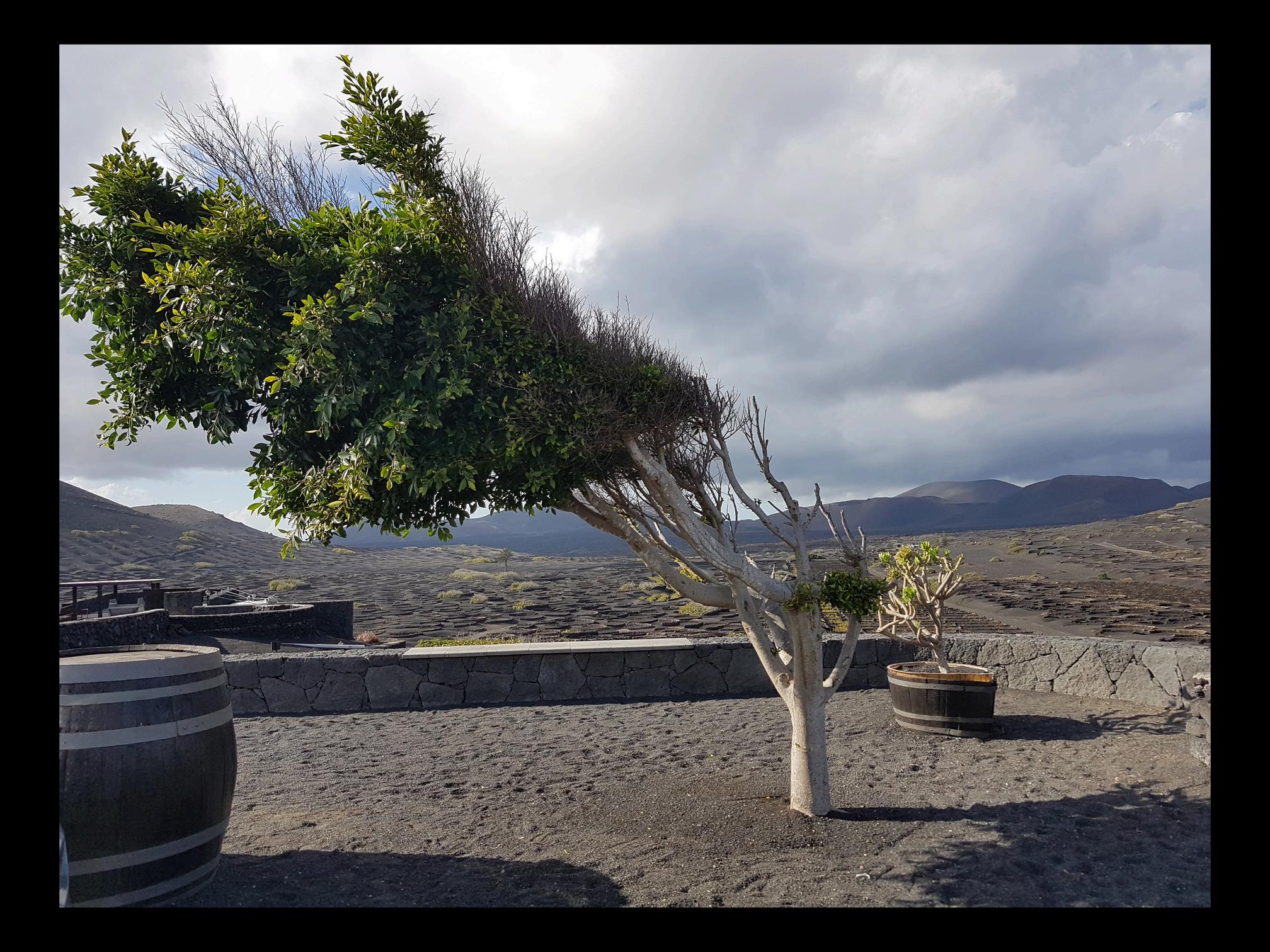
KNOWING
CHAPTER5: THEWORLDYOUCANNOTSEE
INTRODUCINGTHECONCEPTOFTHEUNSEENWORLD
EXPLORINGTHEPOWEROFPERCEPTIONANDINTUITION
CONNECTINGWITHTHESPIRITUALORMETAPHYSICAL ASPECTSOFLIFE


YYour presence, a silent orchestra, conducts unseen symphonies. In the world beyond sight, charisma isn't a spectacle; it's an energy felt. It's the magnetic force that precedes your arrival, a dance of unspoken connections. Charisma is the poetry of influence, penned in the hearts of those who sense the magic you bring. In the realm where words retreat, your presence echoes, imprinting an indelible mark. It's a reminder that impact isn't always visible; it's the ripples of charisma that shape the unseen currents of every encounter. Your presence matters – in the world you can't see, you're a charismatic force.
Y o u r P r e s e n c e M a t t e r s
I I I I
THE WORD…
n the tapestry of existence, there exists a world beyond the visible, a realm woven with threads of perception, intuition, and the spiritual or metaphysical aspects of life. This chapter delves into the profound concept of the unseen world, exploring the power of perception and intuition, and guiding you on a journey to connect with the spiritual dimensions that shape our understanding of boundaries and rules
Introducing the Concept of the Unseen World Beyond the Tangible:
The unseen world encompasses dimensions beyond the tangible and visible It's the realm of energies, vibrations, and forces that influence our experiences, perceptions, and interactions with the world around us
Perception as a Key:
Perception serves as a key to unlock the door to the unseen world By expanding our perception beyond the limitations of the physical senses, we gain access to subtle nuances, energies, and connections that elude the naked eye
Intuition as a Guide:
Intuition, the quiet whisper of inner knowing, is a guide in navigating the unseen world Cultivating and trusting intuition allows us to sense the subtle energies and patterns that shape our reality, transcending the boundaries of rational understanding
Exploring the Power of Perception and Intuition
Perception Beyond Sight:
Perception extends beyond the realm of sight It involves opening the mind's eye to perceive the energies, auras, and subtle vibrations that coexist in the unseen world. Embracing a broader perception enriches our understanding of the interconnectedness of all things.
The Wisdom of Intuition:
Intuition is a form of inner wisdom that transcends logic. It's the ability to sense, feel, and understand without the need for explicit reasoning Exploring and honouring our intuitive impulses allows us to navigate the unseen world with a profound sense of trust and alignment.
Listening to Subtle Cues:
The unseen world communicates through subtle cues and messages By honing our ability to listen, both to the world around us and to the whispers within, we become attuned to the guidance and insights that shape our journey
Connecting with the Spiritual or Metaphysical Aspects of Life
Spirituality as a Gateway:
Spirituality serves as a gateway to the unseen world It involves acknowledging the existence of a higher consciousness, divine energies, and universal forces that influence the course of our lives Connecting with spirituality opens doors to a deeper understanding of the metaphysical aspects of existence.
Redefining Boundaries:
The unseen world challenges conventional boundaries It invites us to question the limitations we impose on ourselves and our understanding of reality. Redefining boundaries involves embracing the idea that the seen and unseen coexist, influencing each other in a dance of cosmic interconnectedness
The Dance of Energy:
Life is a dance of energy, where the seen and unseen intermingle Exploring the metaphysical aspects of existence involves recognising and participating in this dance, acknowledging the role of energy, vibrations, and frequencies in shaping our reality.
Embracing the Mystical Journey
Cultivating Awareness:
Cultivating awareness is central to navigating the unseen world. By paying attention to the subtle shifts in energy, emotions, and intuitive nudges, we become active participants in the mystical journey of life
Practices for Connection:
Various practices facilitate connection with the unseen world, such as meditation, energy healing, and spiritual rituals Engaging in these practices creates a sacred space for communion with the metaphysical dimensions that influence our reality.
Honouring Intuitive Insights:
Honouring intuitive insights involves trusting the wisdom that arises from within. It requires setting aside scepticism, embracing the unknown, and allowing the unseen world to reveal its mysteries through the language of intuition
I’ll leave you with this...
The unseen world is a vast, mystical realm waiting to be explored By acknowledging the power of perception and intuition, and by connecting with the spiritual or metaphysical aspects of life, we embark on a transformative journey that transcends the boundaries of the seen As you navigate this chapter, may you open your senses to the unseen, embrace the mystical dance of energies, and discover the profound beauty that exists beyond the visible veil of reality The unseen world beckons an invitation to a dee

SOURCE
CHAPTER6:UNVEILINGYOURENERGYSOURCE
IDENTIFYINGSOURCESOFPERSONALENERGY
EXPLORINGTHECONNECTIONBETWEENPASSIONANDENERGY
STRATEGIES FOR OPTIMISING AND MAINTAINING ENERGY LEVELS


I g n i t e Y o u r
EEmbark on the journey of self-discovery by unveiling your energy source. It's an odyssey that transcends the physical, tapping into the essence of your being. Express your true self authentically, for within this authenticity lies the power to harness boundless energy. Peel away the layers, connecting with the core that fuels your passion, purpose, and vitality. This unveiling is not just an exploration; it's a liberation, a conscious choice to radiate your true essence. Embrace the energy that flows within, for in expressing your genuine self, you unlock a reservoir of power that propels you towards a life of fulfilment and authenticity.
E s s e n c e
E E E E
THE WORD…
netering the intricate dance of life, the vitality and vigour we bring to each moment are deeply intertwined with the sources from which we draw our energy. This chapter delves into the exploration of identifying sources of personal energy, understanding the connection between passion and energy, and provides strategies for optimising and maintaining the essential life force that propels us forward
Identifying Sources of Personal EnergyBeyond the Tangible:
Internal and External Sources:
Personal energy stems from a combination of internal and external sources Internal sources include physical health, mental well-being, and emotional resilience External sources encompass the environment, relationships, and activities that either drain or replenish our energy
Passions
and Interests:
Identifying passions and interests is a powerful way to tap into a sustainable source of energy Engaging in activities that align with personal passions creates a positive feedback loop, nourishing both physical and emotional well-being
Rest and
Recovery:
Adequate rest and recovery are foundational sources of energy Quality sleep, relaxation, and periods of rejuvenation contribute to overall vitality, ensuring that the body and mind are ready to face life's demands
Meaningful Relationships:
Meaningful relationships play a crucial role in energising our lives Positive connections with friends, family, and supportive communities provide emotional nourishment, fostering a sense of belonging and purpose.
Alignment with Values:
Aligning actions with personal values is a source of authentic energy. When our endeavours and choices reflect our core values, there is a natural sense of purpose and fulfilment that energises our pursuits
Exploring the Connection Between Passion and Energy
Passion as a Catalyst:
Passion acts as a catalyst for energy When we are passionate about our pursuits, whether in work, hobbies, or relationships, the enthusiasm generated becomes a driving force that propels us forward with vitality and resilience
Intrinsic Motivation:
Intrinsic motivation, fueled by passion, is a potent source of sustainable energy. Unlike external rewards or validation, the intrinsic joy derived from pursuing what we love serves as an enduring wellspring of inspiration
Flow States and Energy:
Flow states, characterised by deep immersion and focused attention, are closely linked to the experience of heightened energy Engaging in activities that induce flow enhances creativity, productivity, and a sense of fulfilment.
Passion as a Stress Buffer:
Passion serves as a buffer against stress When faced with challenges, individuals driven by passion often exhibit greater resilience and the ability to navigate difficulties with a positive mindset, mitigating the draining effects of stress
Continuous Learning and Growth:
A passion for continuous learning and personal growth fuels an ongoing sense of curiosity and engagement with life This commitment to evolving one's skills and knowledge contributes to sustained energy and a zest for living.
Strategies for Optimising and Maintaining Energy Levels
Holistic Self-Care:
Holistic self-care involves addressing physical, mental, and emotional well-being Regular exercise, nourishing nutrition, adequate sleep, and mindfulness practices contribute to optimal energy levels.
Prioritising Passionate Pursuits:
Prioritising time for passionate pursuits is essential for maintaining high energy levels Balancing responsibilities with activities that bring joy and fulfilment ensures a harmonious energy flow.
Effective Time Management:
Effective time management is a strategic approach to optimise energy. Prioritise tasks, set realistic goals, and allocate time efficiently to prevent burnout and ensure a sustainable pace
Mindful Boundaries:
Setting mindful boundaries is crucial for preserving energy. Recognize when to say no, create space for rest, and establish limits that protect against overcommitment, maintaining a healthy balance
Regular Reflection and Adjustment:
Regularly reflecting on sources of energy and making necessary adjustments is an ongoing process Life evolves, and so do our needs and priorities Being attuned to these changes allows for continuous optimization of energy sources.
Social Connection and Support:
Cultivating social connections and seeking support when needed contribute to energy optimization. Positive relationships provide emotional nourishment and serve as a buffer against the draining effects of isolation or negativity
I’ll leave this with you...
Understanding where you get your energy from is a profound exploration that intertwines internal and external factors, passions, and sustainable practices. Identifying sources of personal energy, recognising the connection between passion and vitality, and implementing strategies for optimising and maintaining energy levels are foundational elements in the pursuit of a vibrant and fulfilling life. Remember, in the dance of existence, your energy is a precious resource nurture it, honour it, and let it guide you towards a life of purpose and vitality In the next chapter, we will explore the transformative power of the journey of self-discovery and personal development


EMBRACE
CHAPTER7: STOPTHEC.R.A.P.
RESPECTINGSELFVERSUSLOVINGSELF
CONFIDENCE-SELF-WORTH
OVERCOMING CRITICISM, RESISTANCE, ANXIETY, AND PROCRASTINATION
BUILDING SELF-RESPECT AND SELF-WORTH BY ELIMINATING NEGATIVEPATTERNS


EEL e a n i n t o
mbrace the tapestry of self-discovery and personal development, confronting obstacles is paramount. To foster growth and well-being, one must courageously dismantle the hindering elements. Stop the C.R.A.P. – Criticism, Resistance, Anxiety, and Procrastination. This acronym encapsulates the negativity that stalls progress. By eliminating these barriers, one paves the way for selfrespect, confidence, and resilience. It's not just about personal evolution; it's a commitment to creating a life liberated from the burdens of self-sabotage. Confronting the C.R.A.P. is a transformative step towards embracing one's authentic self and nurturing a path of genuine growth and well-being.
Li f e

THE WORD…
TTT T
he journey of self-discovery and personal development, it's crucial to confront and overcome the elements that hinder growth and well-being This chapter addresses the acronym C R A P , representing Criticism, Resistance, Anxiety, and Procrastination We'll explore the delicate balance between respecting oneself and loving oneself, delve into the intertwined concepts of confidence and self-worth, and provide strategies for building self-respect and self-worth by eliminating negative patterns.
Respecting Self versus Loving Self
Distinguishing Between Respect and Love:
Respecting oneself involves recognising and valuing one's own worth, setting boundaries, and making choices aligned with personal values. Loving oneself goes beyond respect, incorporating a deep sense of compassion, acceptance, and nurturing care.
The Foundation of
Self-Respect:
Self-respect is the foundation upon which self-love is built. It involves acknowledging one's inherent worthiness, setting standards for how one deserves to be treated, and fostering a positive self-image.
Balancing Self-Respect and Self-Love:
Balancing self-respect and self-love requires acknowledging imperfections without self-condemnation.
Embracing self-love involves cultivating a compassionate inner dialogue, celebrating achievements, and extending the same kindness to oneself as one would to a beloved friend.

Confidence - Self-Worth
Understanding Confidence:
Confidence is the belief in one's abilities and judgments. It stems from self-assurance, experience, and a positive self-perception Building confidence involves recognizing strengths, learning from challenges, and embracing a growth mindset.
The Connection Between Confidence and Self-Worth:
Confidence and self-worth are interconnected While confidence pertains to specific abilities and skills, selfworth is the overall sense of one's value and deservingness Fostering a healthy self-worth provides a solid foundation for building and sustaining confidence
Overcoming Confidence Barriers:
Overcoming confidence barriers involves identifying and challenging limiting beliefs These beliefs often stem from past experiences, societal expectations, or negative selfperceptions. Cultivating self-awareness and adopting positive affirmations contribute to dismantling these barriers
Overcoming Criticism, Resistance, Anxiety, and Procrastination
Confronting Criticism:
Confronting criticism involves distinguishing between constructive feedback and destructive criticism. Embrace feedback that fosters growth while learning to discard unfounded or malicious critiques Responding to criticism with resilience and a growth mindset is key
Navigating Resistance:
Resistance often arises when facing change or stepping outside comfort zones Understanding the root causes of resistance allows for targeted strategies Visualisation, goal setting, and breaking tasks into manageable steps can help overcome resistance.
Building Self-Respect and Self-Worth by Eliminating Old Patterns
Identifying Negative Patterns:
Identifying negative patterns involves self-reflection and awareness Recognize recurring thoughts, behaviours, or relationships that diminish self-respect and self-worth
Journaling and seeking feedback from trusted individuals can provide valuable insights.
Cultivating Positive Habits:
Cultivating positive habits involves replacing negative patterns with affirming behaviours. Establish routines that prioritise self-care, surround yourself with positive influences, and engage in activities that uplift and empower
Setting Boundaries:
Setting boundaries is a powerful way to build selfrespect Clearly communicate personal limits and learn to say no when necessary Establishing boundaries protects one's well-being and fosters a sense of selfrespect.
Practising Self-Compassion:
Practising self-compassion is essential in building selfworth. Treat yourself with the same kindness and understanding you would offer to a friend facing challenges Embrace mistakes as opportunities for growth and learning
I’ll leave this with you...
Stopping the C R A P involves a courageous confrontation with the internal and external elements that undermine selfrespect and self-worth. By distinguishing between respecting oneself and loving oneself, understanding the interconnectedness of confidence and self-worth, and actively addressing criticism, resistance, anxiety, and procrastination, individuals can foster a profound sense of self-empowerment and well-being. Remember, the journey towards self-respect and self-love is ongoing, and each step taken is a triumph in itself In the next chapter, we will explore the transformative power of gratitude in cultivating resilience and embrace a positive mindset.

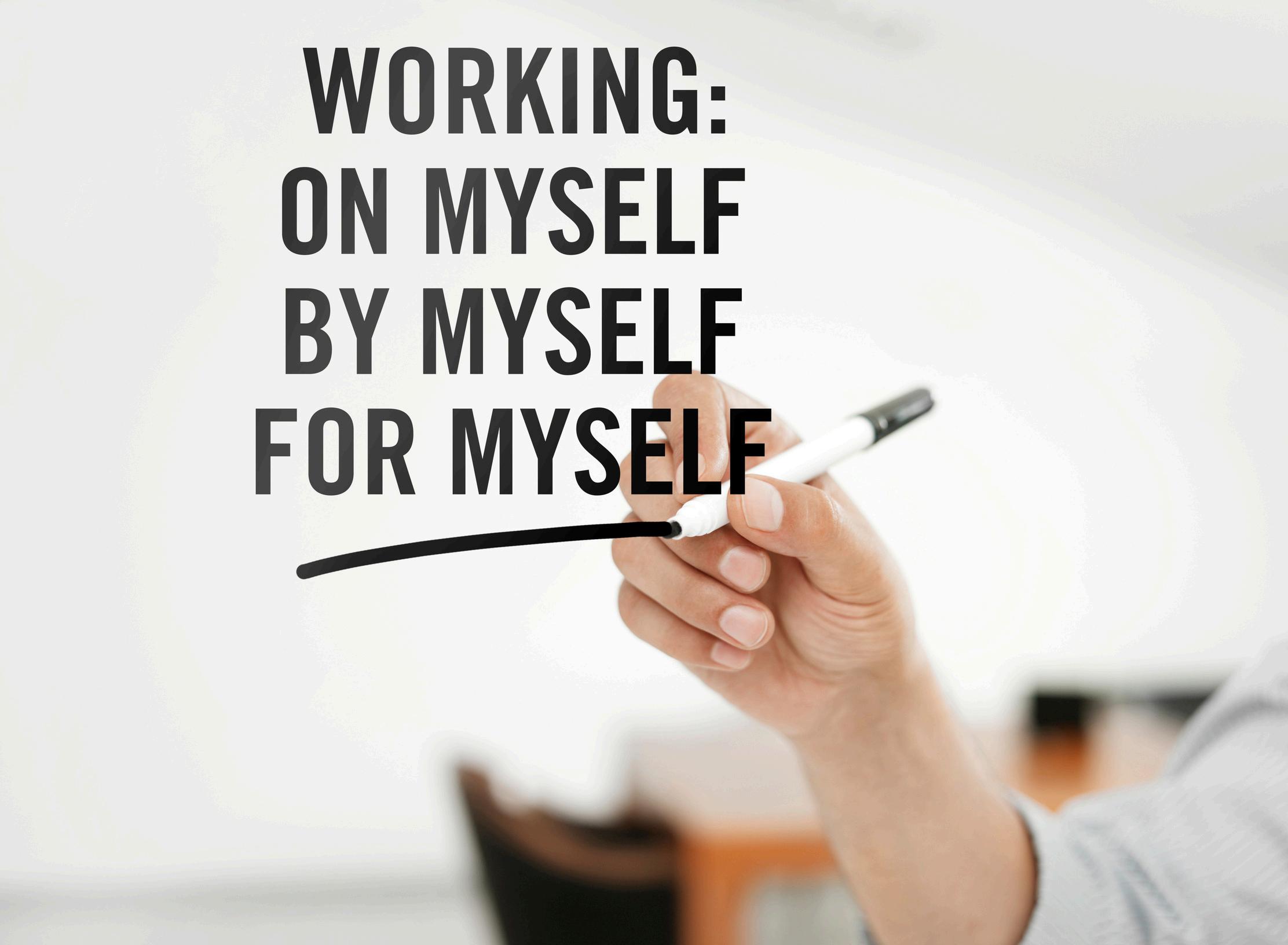
REFRAME
CHAPTER8: ANXIETYASANOPPORTUNITY
REFRAMINGANXIETYASANOPPORTUNITYFORGROWTH
UNDERSTANDINGTHEROOTCAUSESOFANXIETY
STRATEGIES FOR ENHANCING MENTAL WELL-BEING AMIDST ANXIETY

E
a r yl W

AAnxiety, often misconstrued as a foe, holds the key to self-discovery. It whispers of an opportunity, signaling early warning signs that something profound stirs within. Instead of dread, greet anxiety with curiosity, for it unveils the unseen chapters of your life.
Pay attention to its nuances, as they are threads woven into the fabric of deeper emotions and unmet needs. In decoding anxiety, you embark on a transformative journey, turning perceived turmoil into a compass guiding you towards understanding, resilience, and profound self-awareness. Embrace anxiety not as a hindrance but as a wise messenger offering a path to growth.
a r n i n g S gi n s
I I
THE WORD… I
I
n the intricate landscape of mental well-being, anxiety often emerges as a formidable challenge However, reframing anxiety as an opportunity for growth can transform this experience into a catalyst for positive change This chapter explores the concept of anxiety as an opportunity, delves into understanding the root causes of anxiety, and provides strategies for enhancing mental well-being amidst the presence of anxiety and knowing there is something deep presenting itself as a early warning signal to pay attention what is happening in your life right now!
Reframing Anxiety as an Opportunity for Shifting Perspectives on Anxiety:
Reframing anxiety involves shifting perspectives from seeing it as a hindrance to viewing it as a potential catalyst for growth. Acknowledge that anxiety, when approached with the right mindset, can unveil valuable insights and opportunities for personal development.
Learning from Discomfort:
Embracing anxiety as an opportunity means recognizing that discomfort often precedes growth. The challenges presented by anxiety can serve as a springboard for acquiring resilience, self-awareness, and coping strategies that contribute to overall mental well-being.
Cultivating a Growth Mindset:
Cultivating a growth mindset involves viewing challenges, including anxiety, as opportunities to learn and adapt. Embrace the belief that skills and resilience can be developed over time, fostering a positive outlook on the journey through anxiety
Understanding the Root Causes of Anxiety
Identifying Triggers:
Understanding anxiety involves identifying specific triggers Triggers can range from external stressors to internal thought patterns. By pinpointing these triggers, individuals can gain insights into the root causes of their anxiety
Exploring Underlying Beliefs:
Anxiety often stems from underlying beliefs and thought patterns. Explore the core beliefs that contribute to anxious feelings, and challenge or reframe them to align with a more positive and empowering perspective
Environmental and Lifestyle Factors:
Environmental and lifestyle factors play a significant role in anxiety Evaluate aspects such as work-life balance, relationships, and daily routines Adjustments in these areas can contribute to a more supportive and conducive mental well-being.
Genetic and Biological Factors:
Genetic and biological factors can influence anxiety
Understanding one's genetic predispositions and biological responses to stress provides a foundation for tailoring coping strategies and seeking appropriate professional support
Strategies for Enhancing Mental Well-being Amidst Anxiety
Mindfulness and Meditation:
Mindfulness and meditation practices are powerful tools for managing anxiety These practices encourage present-moment awareness, reduce the impact of anxious thoughts, and foster a sense of calm and centeredness.
Cognitive Behavioral Therapy (CBT):
Cognitive Behavioral Therapy is an evidence-based approach that addresses thought patterns contributing to anxiety. Working with a mental health professional trained in CBT can provide effective strategies for changing
thought patterns
Stress Management Techniques:
Stress management techniques, including deep breathing exercises, progressive muscle relaxation, and time-management strategies, can alleviate the physical and mental symptoms of anxiety, promoting overall wellbeing
Physical Activity and Exercise:
Regular physical activity has been linked to improved mental health Engaging in exercise releases endorphins, reduces stress hormones, and provides a positive outlet for managing anxiety.
Connection and Support:
Connection with others is a vital component of mental well-being Seek support from friends, family, or support groups. Sharing experiences and feelings with trusted individuals can alleviate the sense of isolation that often accompanies anxiety
Professional Support:
Seeking professional support is a proactive step for enhancing mental well-being amidst anxiety. Mental health professionals, including therapists and counsellors, can offer guidance, coping strategies, and a supportive space for exploring the root causes of anxiety.

A NEW CYCLE
I’ll leave this with you...
Viewing anxiety as an opportunity for growth reframes its presence in our lives By understanding the root causes of anxiety and implementing strategies for enhancing mental well-being, individuals can navigate the challenges posed by anxiety with resilience and self-compassion Remember, the journey to mental well-being is unique for each individual, and seeking support is a sign of strength. In the next chapter, we will explore the profound role of gratitude in fostering resilience and cultivating a positive mindset


CHAPTER9: BEINGHONESTWITHYOURSELF
ACKNOWLEDGINGTHECHALLENGEOFSELF-HONESTY
EMBRACINGRESPONSIBILITY,MISTAKES,ANDIMPERFECTIONS
STRATEGIESFORFACINGTHENAKEDTRUTHABOUTONESELF

S u r r e n d e r

FFacing the Naked Truth is an intimate encounter with self-honesty – a profound act of surrender to the current chapter of your life. It's about shedding pretences and embracing the raw authenticity within. Confront mistakes, imperfections, and the weight of responsibility with an open heart. This journey is not about perfection but resilience, not about hiding but revealing. In facing the Naked Truth, you relinquish what no longer serves you in the present. It's a transformative dance with vulnerability, where honesty becomes a beacon, guiding you to a place of acceptance, self-love, and honouring now.
Y o u r s e l f
C C
THE WORD…
C C
ommencing your inner journey of self-discovery and personal growth, one of the most profound yet challenging endeavours is being honest with oneself This chapter delves into the acknowledgement of the inherent challenge of selfhonesty, explores the transformative power of embracing responsibility, mistakes, and imperfections, and provides strategies for facing the naked truth about oneself
Acknowledging the Challenge of Self-Honesty
The Complexity of Self-Reflection:
Acknowledging the challenge of self-honesty requires an understanding of the complexity of self-reflection. Unravelling layers of beliefs, biases, and self-perceptions demands courage and a willingness to delve into the depths of one's own psyche.
Fear of Unveiling Truths:
The fear of unveiling uncomfortable truths about oneself often acts as a barrier to self-honesty. Fear of judgement, guilt, or facing aspects of ourselves we'd rather ignore can make the journey toward self-honesty a daunting but essential process.
Cultivating Compassionate Self-Reflection:
Cultivating compassionate self-reflection is crucial in overcoming the challenges of self-honesty. Rather than approaching self-exploration with harsh judgement, embracing oneself with kindness and understanding opens the door to transformative growth.
Embracing Responsibility, Mistakes, and Imperfections
Taking Ownership of Actions:
Embracing responsibility involves taking ownership of one's actions, decisions, and their consequences This foundational step in self-honesty requires humility and a commitment to learning from both successes and mistakes
Learning from Mistakes:
Mistakes are inherent to the human experience. Embracing the lessons embedded in mistakes transforms them from pitfalls into stepping stones Each misstep becomes an opportunity for growth, resilience, and refinement of character.
Navigating Imperfections:
Embracing imperfections is a cornerstone of self-honesty Recognising and accepting that perfection is an unattainable standard allows for a more realistic and compassionate view of oneself and others.
Overcoming
the Fear of Judgment:
The fear of judgement, whether from oneself or others, can hinder self-honesty. Understanding that imperfections are universal and do not diminish one's worth is vital for overcoming this fear and nurturing an environment conducive to self-growth
Strategies for Facing the Naked Truth About Oneself
Journaling and Reflection:
Journaling and reflection create a private space for selfexploration. Regularly writing about thoughts, feelings, and experiences fosters self-awareness and provides a tool for facing the naked truth without external judgement
Mindfulness Practices:
Mindfulness practices, including meditation and presentmoment awareness, facilitate a deep connection with one's inner self These practices create a stillness that allows for honest self-reflection and an acceptance of the present reality.
Setting Realistic Goals for Personal Growth:
Setting realistic goals for personal growth establishes a roadmap for the journey toward self-honesty These goals act as milestones, providing direction and motivation while allowing for the acknowledgment of progress
Affirmations and Positive Self-Talk:
Affirmations and positive self-talk contribute to creating a supportive internal dialogue. Cultivating a habit of uplifting self-talk counteracts negative thought patterns, fostering an environment conducive to self-honesty
I’ll leave this with you...
Being honest with oneself, facing the naked truth, and embracing responsibility, mistakes, and imperfections are transformative aspects of the human experience. The journey toward self-honesty is ongoing, marked by moments of clarity, vulnerability, and growth Remember, in acknowledging the naked truth about oneself, there is an opportunity for profound self-acceptance and authentic living. In the next chapter, we will explore the transformative power of gratitude in stepping into resilience and cultivating a positive mindset

REDEFINE
CHAPTER10: MOVEWITHGRACE
NAVIGATING PERSONAL RELATIONSHIPS WITH HEALTH AND FITNESS
ENCOURAGINGALOVE-BASEDAPPROACHTOWELL-BEING
STRATEGIES FOR INCORPORATING MOVEMENT AND NOURISHINGFOODINTODAILYLIFE


P i v o t T o
IIn the dance of personal well-being, a pivotal question arises: should you rise for exercises, investing less than an hour to honour yourself and shape a great life? Navigating the intricate steps of personal relationships with health and fitness demands a love-based approach. It's a rhythmic choice – choosing movement over inertia, prioritising self-love over hesitation. Each exercise becomes a step towards greatness, a celebration of your commitment to well-being. The dance is a daily affirmation, where every move echoes your dedication to a harmonious partnership with health, an investment in the symphony of a vibrant and fulfilling life.
N N N N
THE WORD…
avigating the dance of personal well-being, the connection with health and fitness often mirrors the broader journey of self-care and self-love This chapter delves into cultivating personal relationships with health and fitness, promoting a love-based approach to well-being, and offering strategies for seamlessly integrating movement and nourishing food into daily life
Navigating Personal Relationships with Health and Fitness
Understanding Personal Histories:
Personal relationships with health and fitness are often shaped by individual histories, experiences, and perceptions. Understanding the roots of one's attitudes toward well-being is crucial in navigating this intricate terrain.
Exploring
Motivations:
Motivations for engaging in health and fitness activities vary widely. Whether driven by a desire for physical strength, mental clarity, or overall well-being, exploring personal motivations provides insight into the deeper reasons behind these choices.
Addressing Barriers:
Identifying and addressing barriers to health and fitness is essential for creating a sustainable and positive relationship. Common barriers may include time constraints, lack of motivation, or past negative experiences. Finding solutions tailored to individual circumstances is key.
Encouraging a Love-Based Approach to Well-being
Shifting from Punishment to Nourishment:
A love-based approach to well-being involves shifting from viewing health and fitness as a form of punishment to embracing it as a means of nourishing the body and mind. This shift in mindset fosters a positive and sustainable relationship with self-care
Fostering
Self-Compassion:
Self-compassion is a cornerstone of a love-based approach. Embracing imperfections, acknowledging the body's needs, and treating oneself with kindness during the wellness journey contribute to a nurturing and supportive relationship with health and fitness.
Celebrating Progress, Big and Small:
Celebrating progress, whether it be achieving fitness goals, adopting healthier habits, or overcoming obstacles, reinforces a positive connection with wellbeing. Acknowledging and celebrating both small and significant milestones cultivates a sense of accomplishment and self-appreciation
Strategies for Incorporating Movement and Nourishing Food into Daily Life
Finding
Joy in Movement:
Incorporating movement into daily life is more sustainable when it brings joy Whether through dancing, hiking, or practising yoga, finding activities that resonate with personal interests ensures a positive relationship with exercise.
Creating Realistic Fitness Goals:
Setting realistic fitness goals is crucial for long-term success. Establish achievable milestones that align with individual capabilities and preferences, allowing for a sense of accomplishment and motivation to continue the journey
Embracing Variety in Exercise:
Embracing variety in exercise prevents monotony and keeps fitness routines exciting Experimenting with different forms of exercise, from strength training to cardio and flexibility exercises, contributes to a holistic and enjoyable fitness regimen
Mindful Eating Practices:
Mindful eating involves paying attention to the sensory experience of eating, tuning into hunger and fullness cues, and savouring each bite Cultivating a mindful approach to eating fosters a healthy relationship with nourishing food.
Meal Planning and Preparation:
Planning and preparing meals in advance support a balanced and nourishing diet This strategy helps avoid impulsive food choices and ensures that meals are aligned with health and wellness goals.
Prioritising Sleep and Stress Management:
Prioritising sleep and stress management is integral to overall well-being. Quality sleep and effective stress management contribute to physical and mental health, enhancing the benefits of a love-based approach to health and fitness



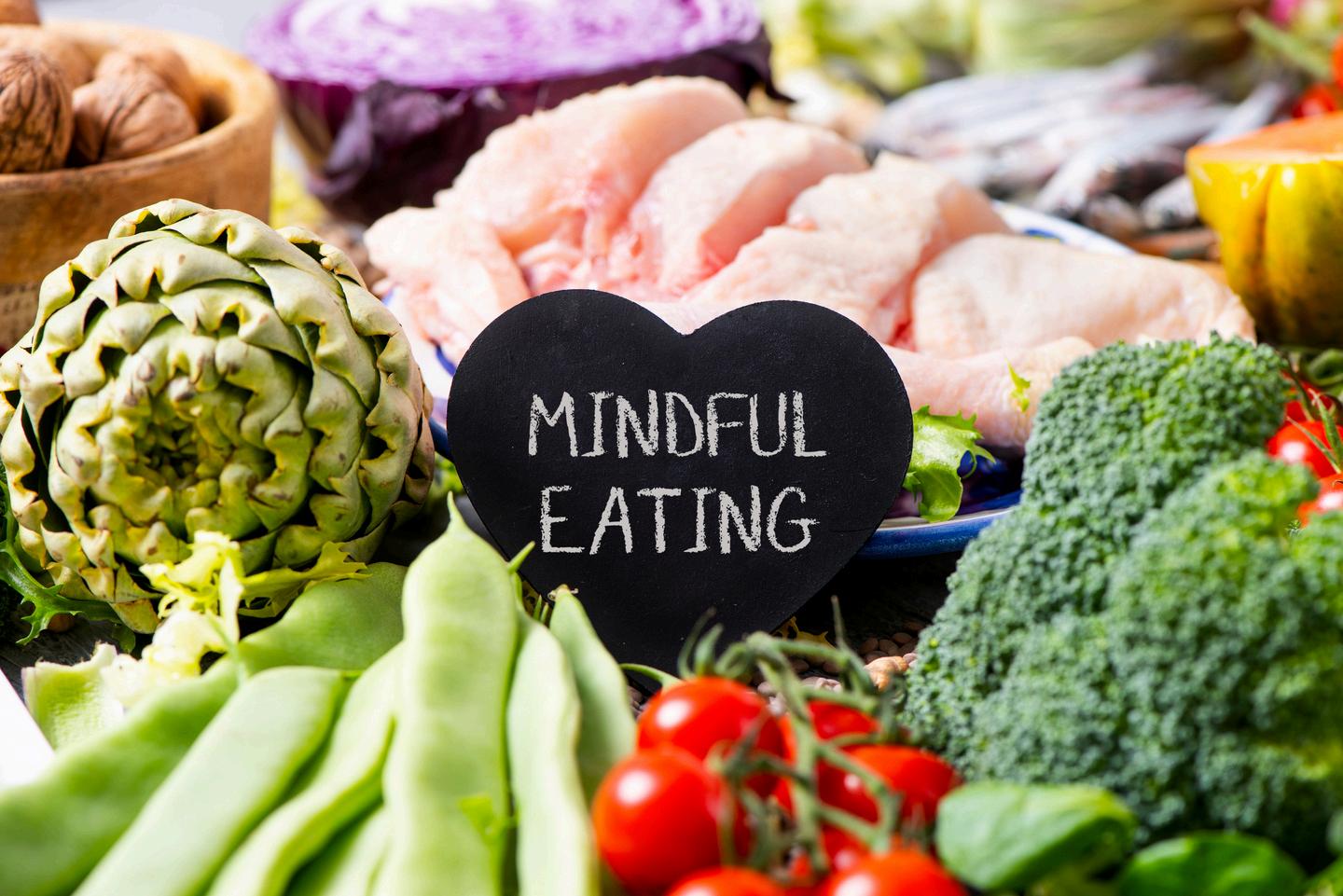



I’ll leave this with you...
Navigating the realm of health and fitness is a deeply personal and transformative journey Encouraging a lovebased approach involves detected self-compassion, celebrating progress, and embracing well-being as a form of self-nourishment By incorporating movement and nourishing food into daily life through joyful and sustainable practices, individuals can cultivate a positive relationship with their health. Remember, the journey toward well-being is an ongoing exploration, marked by self-discovery, selflove, and the continuous pursuit of a balanced and fulfilling life. In the next chapter, we will explore the transformative power of gratitude in fostering resilience and cultivating a positive mindset


CHOICE
CHAPTER11: IFRINGGINLOVEFOOD...
INTRODUCINGTHECONCEPTOFMEATVERSUSVEGETARIAN
OTHERFORMSOFPROTEINOTHERTHANMEAT
WHEREDIDGLUTENCOMEFROM


S h o u l d I
DDelve into the profound healing powers of food, where every choice resonates in the symphony of our wellbeing. This chapter unravels the dichotomy of meat versus vegetarianism, inviting exploration into alternative protein sources beyond meat. From the vibrant palette of nutritional choices emerges the quest for balance. Discover the origins of gluten, unearthing the mysteries behind this often-misunderstood element. In the dance between meat and vegetarian options, and the intricate web of protein choices, lies the essence of nourishment. This chapter is an ode to the healing journey fostered by our culinary selections, where every bite holds the potential for vitality and sustained well-being.
S h o u l d n’ t I
HH HTHE WORD…
Healing potential of food is paramount, nurturing our bodies profoundly Our well-being hinges on the choices we make regarding what we consume Within this chapter, we embark on a journey into the curative properties of food It delves into the dynamic between meat and vegetarianism, investigating diverse protein sources beyond meat and demystifying the origins of gluten This exploration serves as a testament to the pivotal role food plays in our overall health. It's an invitation to understand and appreciate the impact of our dietary decisions on the intricate tapestry of our wellbeing.
The Meat Versus Vegetarian Conundrum
Nutritional Philosophies:
The choice between meat and vegetarianism extends beyond personal preference; it often embodies different nutritional philosophies. Exploring the nutritional value of both options involves understanding the unique benefits and potential drawbacks each brings to the table.
Plant-Powered Healing:
Vegetarianism, rooted in plant-based nutrition, boasts an array of health benefits. From increased fibre intake to a wealth of vitamins and antioxidants, a plant-powered diet has been associated with lower risks of chronic diseases and improved overall well-being.
Balancing Nutritional Needs:
Balancing nutritional needs is a key consideration when opting for a vegetarian lifestyle. Understanding how to obtain essential nutrients such as protein, iron, and B vitamins from plant sources is crucial for maintaining optimal health and vitality
Other Forms of Protein Beyond Meat
Diversifying Protein Sources:
Protein, a fundamental building block for the body, can be sourced from various alternatives beyond meat Exploring plant-based proteins, such as legumes, nuts, seeds, and tofu, provides a rich tapestry of options that cater to different dietary preferences
Navigating Plant-Based
Proteins:
Navigating plant-based proteins involves understanding their nutritional profiles and incorporating them strategically into meals The combination of different plant proteins can create a well-rounded and complete amino acid profile, supporting muscle health and overall body function.
The Rise of Plant-Based Alternatives:
The rise of plant-based alternatives, from pea protein burgers to soy-based meat substitutes, offers diverse options for those seeking alternatives to traditional animal products These alternatives not only cater to different tastes but also contribute to environmental sustainability
Unravelling the Origins of Gluten
The Gluten Conundrum:
Gluten, a protein found in wheat, barley, and rye, has become a subject of scrutiny in modern diets. Unravelling the origins of gluten involves tracing its presence in various grains and understanding its role in food processing
Celiac Disease and Gluten Sensitivity:
Gluten-related health concerns, such as celiac disease and gluten sensitivity, have brought attention to the impact of gluten on certain individuals Exploring these conditions provides insights into the importance of gluten-free diets for those affected.
Balancing Gluten Consumption:
Balancing gluten consumption involves making informed choices about the grains we include in our diets For individuals with gluten-related conditions, adopting gluten-free alternatives becomes imperative, while others may find benefits in moderating gluten intake for digestive wellness
Healing through Mindful Eating
The Mind-Body Connection:
The healing power of food extends beyond physical nourishment to embrace the mind-body connection.
Adopting mindful eating practices, such as savouring flavours, listening to hunger cues, and cultivating gratitude for the nourishment received, enhances the overall healing experience.
Food as Medicine:
Food can be viewed as a form of medicine, capable of preventing and alleviating various health issues
Exploring the therapeutic properties of specific foods, herbs, and spices opens the door to harnessing the healing potential within our daily meals
Culinary Exploration for Wellness:
Culinary exploration becomes a journey of wellness.
Experimenting with diverse ingredients, flavours, and cooking methods transforms the act of eating into a nourishing and enjoyable experience that supports both physical and mental health.

I’ll leave this with you...
In the realm of nutrition, the choices we make resonate deeply with our inner belief system and the knowledge we have around the food we eat for our well-being. The healing power of food lies not only in its nutritional content but also in the intention, awareness, and mindfulness we bring to our eating habits Whether navigating the meat versus vegetarian conundrum, exploring alternative sources of protein, or understanding the findings of gluten, this chapter invites you to view your plate as a canvas for health, vitality, and the profound connection between the choices you make and the well-being you cultivate. May your culinary journey be a source of nourishment, joy, and holistic healing.



‘ SWITCH ON YOUR HAPPY AND WELL BUTTON AND CHOOSE TO LIVE A SUCCESSFUL LIFE ’
REWIRE
CHAPTER12: IDON‘TLIKECHANGE...
THEPOWEROFCURIOSITY
THENATUREOFCHANGE

STRATEGIES FOR EMBRACING CHANGE AS A CATALYST FOR MENTALWELL-BEING
T a k e T h e

RResistance to change is a familiar refrain, echoing the sentiment of many. Yet, within this resistance lies the key to transformation. In the dance of curiosity, change becomes a partner in enhancing mental well-being. Acknowledge the hesitancy, but don't be confined by it. Dive into the uncharted waters of excitement and curiosity beyond change's facade. This chapter serves as a guide, offering strategies to not only embrace change but to use it as a catalyst for mental well-being. It's an ode to the profound journey of rewiring, where each step towards change becomes a note in the symphony of personal growth.
T a k e T h e L e a p
I I I I
THE WORD…
n life's dynamic tapestry, change stands as the only constant This chapter intricately weaves together the threads of curiosity, change, and mental well-being, underscoring the vital role change plays as a catalyst for personal growth, resilience, and positive mental health Embracing change becomes more than adaptation; it transforms into an intentional journey of self-discovery As the pages unfold, discover the profound impact of curiosity, inviting you to dance with change rather than resist it. Within this exploration lies a roadmap to not just navigate life's shifts but to thrive, fostering a mindset that transforms each change into a stepping stone for personal evolution.
The Power of Curiosity
Curiosity as a Mindset:
Curiosity serves as a mindset that invites exploration and a willingness to engage with the unknown. Embracing curiosity opens the door to new perspectives, ideas, and experiences, fostering a sense of wonder and adaptability. Curiosity in Challenging Times: During challenging times, cultivating curiosity can be transformative. Instead of succumbing to fear or resistance, a curious mindset encourages a proactive and open approach to understanding and navigating difficulties.
Continuous Learning and Growth:
Curiosity fuels continuous learning and personal growth. It propels individuals to seek knowledge, acquire new skills, and evolve in response to the ever-changing circumstances of life
The Nature of Change
Understanding Change as Inevitable:
Change is an inherent aspect of the human experience
Acknowledging its inevitability sets the stage for a more proactive and accepting relationship with the ebbs and flows of life.
Navigating Transitions:
Life is a series of transitions, and each change, whether small or significant, presents an opportunity for growth. Navigating transitions with a positive mindset allows individuals to harness the potential for personal development
Resisting vs. Embracing Change:
Resistance to change can lead to stress and stagnation, while embracing change opens the door to innovation, resilience, and a richer life experience Understanding the choice between resistance and acceptance is pivotal for mental well-being.
Embracing Change for Mental Well-being
Flexibility and Adaptability:
Embracing change involves developing flexibility and adaptability These qualities empower individuals to adjust to new circumstances, navigate challenges with resilience, and maintain positive mental well-being in the face of uncertainty.
Cultivating a Growth Mindset:
A growth mindset, rooted in the belief that abilities and intelligence can be developed over time, is closely linked to embracing change. Cultivating this mindset fosters a positive attitude toward challenges and an eagerness to learn from experiences
Finding Opportunities in Change:
Change often brings opportunities for self-discovery, innovation, and personal fulfilment Recognising and seizing these opportunities contributes to a sense of purpose and meaning, enhancing mental well-being.
Mindfulness in the Midst of Change:
Mindfulness practices, such as meditation and presentmoment awareness, offer valuable tools for navigating change. By grounding oneself in the present, individuals can reduce anxiety about the future and cultivate a calm and centred mindset
Strategies for Embracing Change
Cultivating Curiosity in Daily Life:
Actively cultivate curiosity in daily life by exploring new hobbies, seeking diverse perspectives, and approaching challenges with an open and inquisitive mind. Embrace the unknown as an opportunity for growth.
Setting Positive Intentions:
Set positive intentions for embracing change Approach transitions with a mindset focused on learning, adaptability, and the potential for positive outcomes. This intention-setting process shapes the way individuals experience and respond to change
Building a Support Network:
Surrounding oneself with a supportive network of friends, family, or mentors is essential for navigating change Share experiences, seek advice, and draw strength from the collective wisdom of those who have faced similar transitions.
Fostering Self-Compassion:
Be compassionate toward oneself during periods of change. Acknowledge that navigating transitions can be challenging, and treat oneself with the same kindness and understanding offered to others
Reflecting on Past Resilience:
Reflect on past instances of resilience and adaptability. Recognise the strength and resilience demonstrated during previous changes, drawing inspiration from those experiences to face current and future transitions
I’ll leave this with you...
Embracing change is not merely an adaptive skill but a profound approach to life that enhances mental well-being. By intertwining curiosity with the acceptance of change, individuals can navigate transitions with grace, resilience, and a positive mindset Remember, the journey of embracing change is a continual process of growth and self-discovery. In the next chapter, we will explore the transformative power of gratitude in fostering resilience and cultivating a positive mindset


UNFOLD
CHAPTER13: ADIFFERENTPERSPECTIVE..
THEPOWEROFCURIOSITY
THENATUREOFCHANGE

STRATEGIES FOR EMBRACING CHANGE AS A CATALYST FOR MENTALWELL-BEING
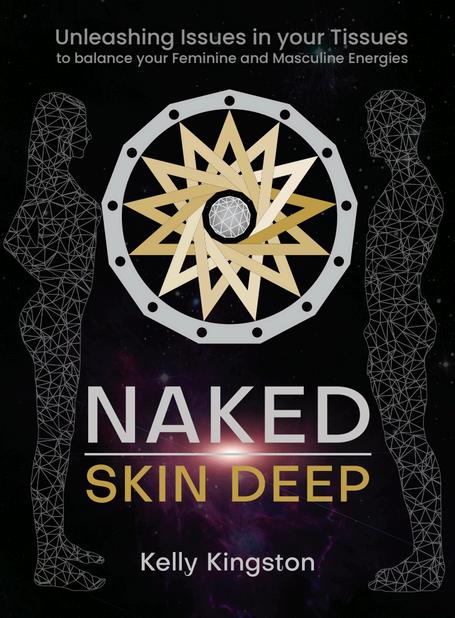
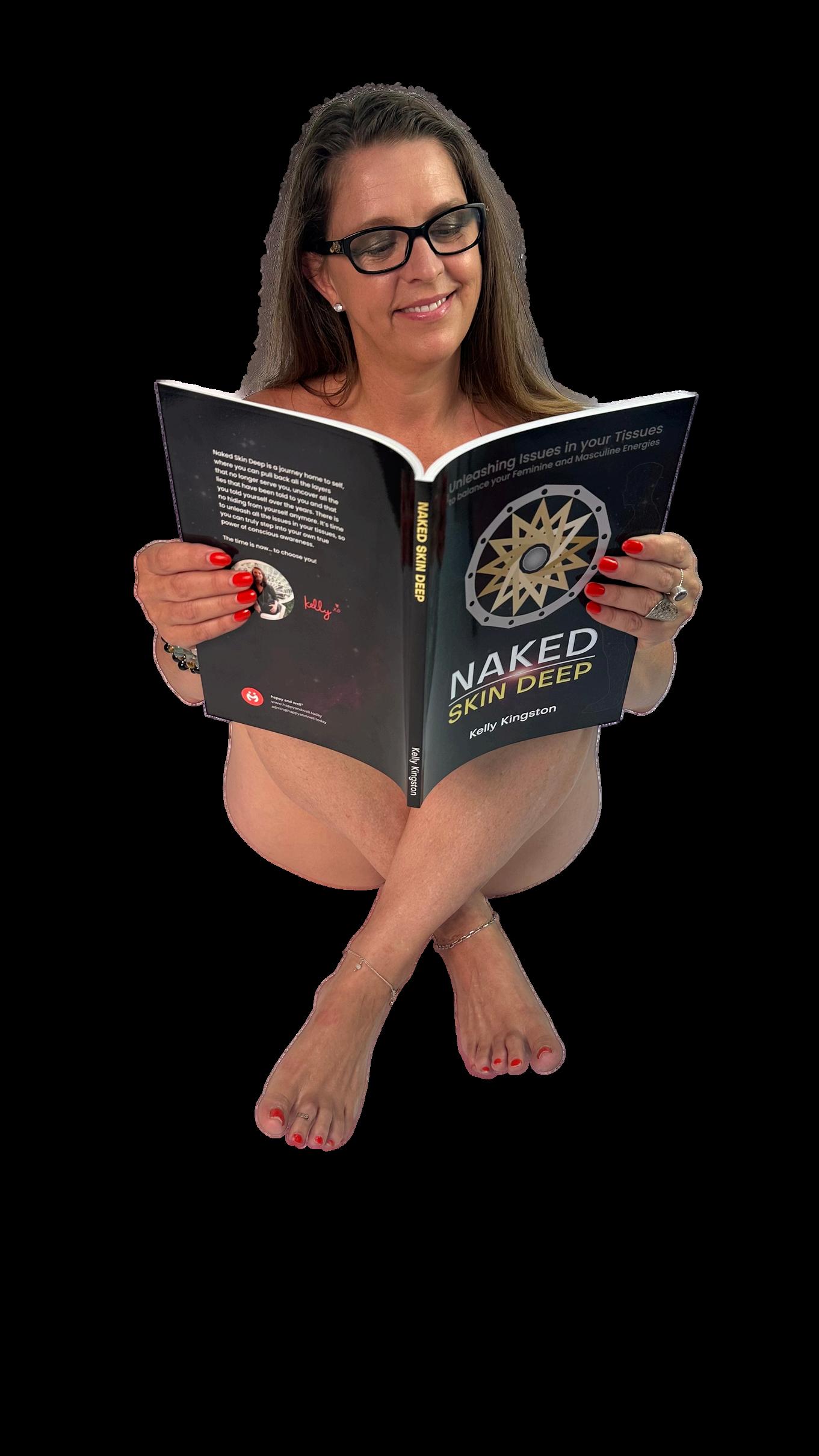
I In the realm of personal growth, "A Different Perspective" sheds light on the intricacies of self-sabotage. Peel back the layers, exploring the concept and recognising default patterns that hinder progress. This chapter serves as a guide, offering strategies to reframe and overcome selfsabotaging behaviours. It's a profound journey of selfawareness, where acknowledging these patterns becomes the first step to liberation. As you navigate through the landscape of your own psyche, discover the power to rewrite the narrative. Embrace a different perspective, where self-sabotage transforms from default to a conscious choice for personal transformation and lasting success.
S u r f a c e
I I I I
THE WORD…

n the labyrinth of personal development, the in your face reflection of self-sabotage often slows down our journey towards growth and well-being This chapter is a lantern in the dark, illuminating the intricacies of self-sabotage It invites introspection, prompting us to recognise default patterns that operate in the shadows. As we unveil these subtle adversaries, the chapter becomes a roadmap to redemption. Strategies unfold like a compass, guiding us to reframe and conquer self-sabotaging behaviours This is not just a chapter; it's a transformative quest for self-mastery With each insight, we rewrite our narrative, navigating towards a terrain where self-sabotage loses its grip, and personal development emerges triumphant. It's a profound exploration, an odyssey towards understanding, liberation, and the unveiling of our most empowered selves.
Exploring the Concept of Self-Sabotage Understanding Self-Sabotage:
Self-sabotage encompasses behaviours, thoughts, or actions that impede one's own progress, success, or wellbeing These patterns often stem from underlying beliefs, fears, or unresolved issues, manifesting in ways that hinder personal growth.
The Internal Conflict:
Self-sabotage reflects an internal conflict within oneself. It arises when subconscious beliefs, often rooted in past experiences or negative self-perceptions, clash with conscious goals and aspirations, leading to counterproductive behaviours
Common Forms of Self-Sabotage:
Self-sabotage can manifest in various forms, including procrastination, fear of success, negative self-talk, perfectionism, and engaging in destructive habits. Recognizing these patterns is pivotal for breaking free from

Recognising Default Patterns of Self-Sabotage
Unearthing Unconscious Beliefs:
Default patterns of self-sabotage are often driven by unconscious beliefs Exploring and unearthing these beliefs is a crucial step in understanding the roots of selfsabotaging behaviours and dismantling the barriers they create
Observing Procrastination Patterns:
Procrastination is a common manifestation of selfsabotage. Recognizing patterns of delaying tasks, avoiding challenges, or creating unnecessary obstacles sheds light on the underlying fears or anxieties driving these behaviours.
Fear of Success and Failure:
The fear of success or failure can be a powerful force behind self-sabotage Identifying moments of hesitation, self-doubt, or avoidance in the face of potential success or failure reveals areas where self-sabotage may be at play.
Negative Self-Talk and Perfectionism:
Negative self-talk and perfectionism create a breeding ground for self-sabotage. Becoming aware of harsh selfcriticism, unrealistic standards, and the fear of making mistakes illuminates the impact of these patterns on overall well-being
Strategies for Reframing and Overcoming SelfSabotaging Behaviours
Cultivating Self-Awareness:
Cultivating self-awareness is foundational for overcoming self-sabotage. Regular introspection, journaling, or seeking feedback from trusted sources provides insights into the triggers, beliefs, and behaviours associated with selfsabotage.
Challenge Negative Beliefs:
Challenge negative beliefs that underpin self-sabotaging behaviours Question the validity of these beliefs, seek evidence to the contrary, and reframe them with more empowering and realistic perspectives.
Setting Realistic Goals:
Setting realistic and achievable goals helps counteract self-sabotage Break larger goals into smaller, manageable steps, celebrating each accomplishment along the way. This approach builds confidence and mitigates the fear of failure
Developing a Growth Mindset:
Developing a growth mindset embracing resilience in the face of challenges. Embrace setbacks as opportunities for learning and growth rather than viewing them as failures A growth mindset diminishes the fear of making mistakes and promotes a positive approach to selfimprovement.
Implementing Positive Habits:
Implementing positive habits creates a counterbalance to self-sabotaging behaviours. Establish routines that support well-being, such as regular exercise, mindfulness practices, and healthy lifestyle choices Positive habits contribute to a more constructive mindset


I’ll leave this with you...
Understanding self-sabotage, recognising default patterns, and implementing strategies for reframing and overcoming self-sabotaging behaviors are pivotal steps on the path to personal growth and fulfillment Remember, the journey to break free from self-sabotage is a continuous process of self-discovery, self-compassion, and intentional transformation. You have the power to make any change in your life, and it starts with you No one can do this for you; you are the only one that can do this for yourself




The Ultimate





